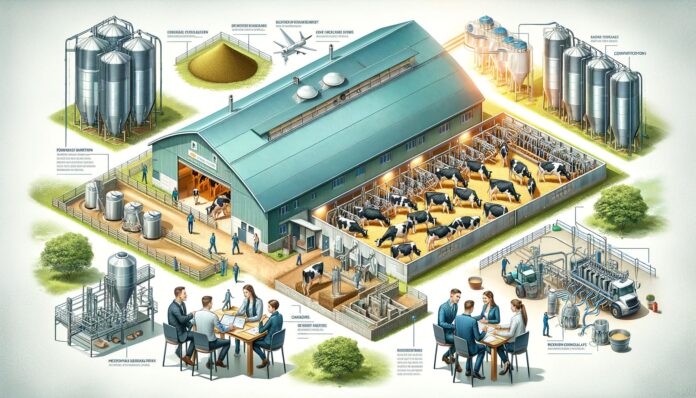Low Productivity of Indian Dairy Animals: Challenges & Mitigation Strategies
Introduction
World Milk Day observed annually on June 1, is a global celebration that recognizes the significance of milk as a vital food source. Established by the Food and Agriculture Organization of the United Nations, this day aims to highlight the dairy sector’s contributions to Nutrition, livelihoods and sustainability. In 2024, the theme for World Milk Day focuses on “Dairy’s role in global nutrition”. India, the largest milk-producing country in the world, boasts a significant population of cows and buffaloes. Despite steady growth in the dairy industry since independence, cattle farms continue to face challenges. Livestock plays a crucial role in the Indian economy, providing employment to approximately 8.8% of the population. However, improving the productivity of farm animals remains a major hurdle.
Challenges Faced by Indian Dairy Animals
- Shortage of Feed/Fodder:
Inadequate availability of nutritious feed and fodder affects milk production. Addressing this challenge requires sustainable practices for feed cultivation and storage.
Mitigation Strategy: Promoting fodder crops, silage production and efficient utilization of crop residues can enhance feed availability.
- Breeding System:
Suboptimal breeding practices lead to low productivity. Lack of proper selection criteria and inadequate use of artificial insemination contribute to this challenge.
Mitigation Strategy: Implementing improved breeding techniques, emphasizing genetic selection, and promoting crossbreeding can enhance animal productivity.
- Education and Training:
Farmers often lack awareness about modern dairy management practices. Insufficient knowledge hampers productivity.
Mitigation Strategy: Providing training programs, workshops and extension services to farmers can enhance their understanding of best practices.
- Hygiene Conditions:
Poor hygiene in animal housing, milking and handling negatively impacts milk quality and productivity.
Mitigation Strategy: Promoting clean and hygienic practices, regular health check-ups and disease prevention measures can improve productivity.
- Marketing and Pricing:
Inefficient marketing channels and price fluctuations affect farmers’ income. The lack of fair pricing mechanisms discourages investment in dairy farming.
Mitigation Strategy: Strengthening market linkages, ensuring fair pricing, and supporting dairy cooperatives can address this challenge.
Mitigation Strategies for Sustainable Dairy Farming
- Gradual Manipulation in Husbandry Practices:
Farmers should adopt progressive practices to improve animal productivity. This includes better nutrition, health management and reproductive techniques.
Biotechnological interventions: Utilizing biotechnology for feed and fodder improvement, reproductive efficiency and disease control can enhance productivity.
- Focus on Health and Nutrition:
Regular health monitoring, vaccination and deworming are essential. Proper nutrition, including balanced diets and mineral supplementation, contributes to higher milk yields.
Zoonotic Disease Control: Addressing zoonotic diseases ensures both animal and human health.
- Sustainable Farming Practices:
Implementing eco-friendly practices reduces the environmental impact of dairy farming. This includes waste management, water conservation and energy-efficient systems.
Carbon Footprint Reduction: Small dairy farms can adopt practices that lower their carbon emissions while maintaining economic viability.
Conclusion:
India’s dairy sector holds immense potential, but addressing the challenges faced by dairy animals is crucial for sustainable growth. By implementing mitigation strategies, we can enhance productivity, improve livelihoods and celebrate World Milk Day with renewed commitment to our bovine companions.
By Deepanshu, Student of BVSc. And AH (4th year)


